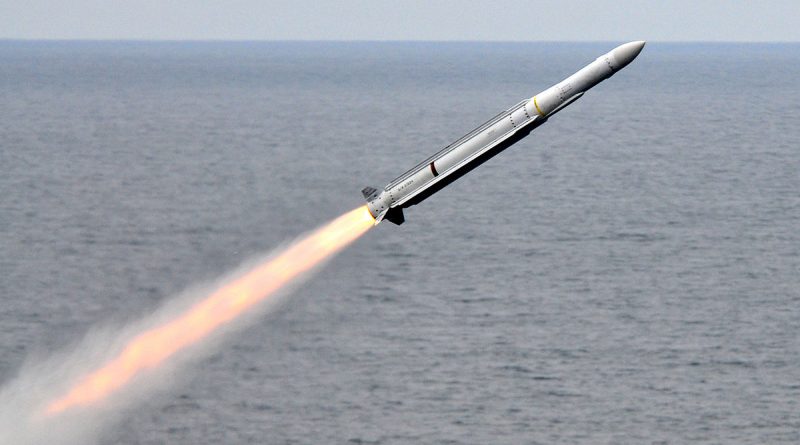North Korea’s Longstanding Nuclear Ambition
North Korea’s nuclear program has been one of the most salient issues in the international security agenda since the turn of the century. On October 15, the country’s failed missile launch was followed by threats of additional nuclear tests and preemptive nuclear strikes.
The following week, an identical North Korean intermediate ballistic missile test was again unsuccessful. However, the country shows signs of significant advances in the nuclear and missile sectors.
An old North Korean desire
North Korea’s nuclear ambitions can be traced back to the 1960’s. Back then, the country had asked China and Russia for help in developing its own nuclear weapons, a request that was promptly refused. This interest in developing those capabilities was a response to the deployment of US nuclear weapons in Korea during the 1950’s. Nonetheless, it persisted even after US withdrawal from the Korean Peninsula in the early 1990’s.
The fact that the country is surrounded by the four major world powers in Japan, Russia, China, and the US – without ever being under a nuclear umbrella – along with the fact that such weapons allow for maximization of security at a minimum cost are among the reasons advocated for that longstanding ambition.
First Nuclear Test
In October 2006, three years after withdrawing from the Nuclear Non-Proliferation Treaty, and a year after defiantly claiming, for the first time, to possess nuclear weapons, the country carried out its first nuclear test. This event was followed by the unanimous approval of the UN Security Council resolution 1718, imposing military and economic sanctions against North Korea.
Further Developments in Pyongyang
A second nuclear test was carried in May 2009, shortly before the announcement of Kim Jong-un as the next North Korean leader.
In February of 2013, Pyongyang conducted its third nuclear test. This was announced by the North Korean Government two days after the UN Security Council adopted its third resolution concerning the country.
2016 in Perspective
During 2016, several significant developments regarding the North Korean nuclear crisis took place. In January, North Korea carried out its fourth nuclear detonation. This was declared by Kim Jong-un to have been a hydrogen bomb test and carried out in self-defense. This claim, however, has been widely disputed.
Days after the purported nuclear test, the US responded by flying a B-52 bomber jet, capable of carrying nuclear weapons, close to North Korean air space. In March, the UN Security Council passed a broad range of sanctions against North Korea. The latter were partly fueled by Kim Jong-un’s claims that the country possessed miniaturized nuclear warheads.
In the months that followed, an unprecedented array of missile launches (many unsuccessful) took place. The country rested uneasy over the ongoing US-South Korean joint military drills, as they became increasingly invasive.
This tension culminated with North Korea’s fifth and largest nuclear test. The latter took place in September 9, with the detonation of a nuclear warhead that could be placed on a ballistic missile. As a display of force, two US B-1 bombers flew over Korea four days after the test.
Literature on Pyongyang’s nuclear advances
Research on North Korea’s nuclear endeavors took off during the early 2000’s. This increase followed Pyongyang threats to resume missile tests, its labeling as an ‘axis of evil’, and its definite withdrawal from the Non-Proliferation Treaty.
The literature shows a particular focus on North Korea’s relationships with the other members of the ‘Six-Party talks’. These include Japan, Korea, China, Russia and the US. This strand of literature strives to find appropriate courses of action from the point-of-view of those countries.
Other studies choose to focus on illicit proliferation networks or the sanctions regime in place against the country, while several works discuss North Korea’s nuclear strategy.
Conclusions
North Korea’s greatly increased nuclear activities throughout 2016 are seemingly intended as a demonstration of force, as pointed out by the timing of the exercises. A good example is the three ballistic missiles that were fired off its East coast during a G20 summit in China. Another example is the last nuclear test, which coincided with the anniversary of the country’s founding.
These actions took place in defiance of UN resolutions. They highlight the marginal impact of sanctioning a country that rejects integration in the global economy, especially if restrictions are not tough enough. Beijing’s acceptance of stricter sanctions against North Korea in March may have opened the door for stronger US-China cooperation on this issue. However, recent developments indicate that North Korean-Chinese business relation has resumed normality.
Currently, a cycle has been established, in which North Korean nuclear advancements lead to a closer US engagement with the dynamics at play in the Korean Peninsula. This has resulted in a stronger effort on behalf of Pyongyang to retaliate against American presence near its borders.
Although every political and diplomatic option should be pursued, worst-case scenario preparations should be underway. This is especially relevant for Seoul, since North Korean’s discourse has become increasingly aggressive, and their uranium enrichment program shows signs of operating self-sufficiently.
US missile, Photo by US Navy / Public domain
![]() This work is licensed under a Creative Commons Attribution-NonCommercial-ShareAlike 4.0 International License.
This work is licensed under a Creative Commons Attribution-NonCommercial-ShareAlike 4.0 International License.




